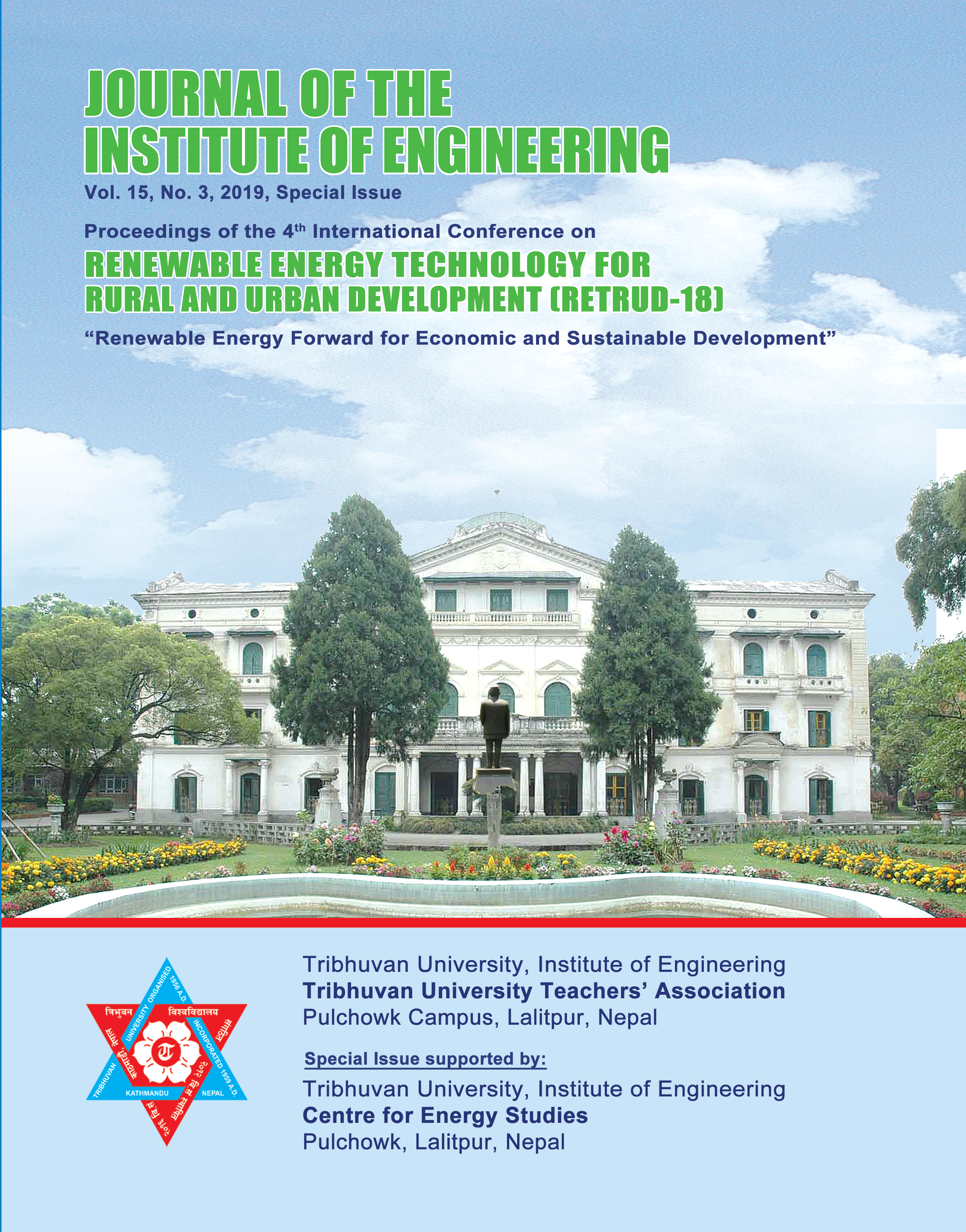Performance Analysis of Booster based Gravitational Water Vortex Power Plant
DOI:
https://doi.org/10.3126/jie.v15i3.32026Keywords:
Gravitational Water Vortex Power Plant, Booster runner, Main runner, Blade inclination angle, Height of booster, Rotational speed, Blade profile, PowerAbstract
Gravitational Water Vortex Power Plant (GWVPP) is a power generation system that suits for ultralow head streams of water with low flow rate. Due to the simple design, compact structure, and the possibility of local fabrication, it can benefit rural areas for off-grid supply. The purpose of this research is to study the potential of booster based GWVPP. Previous researches concluded the best position of turbine in GWVPP is actually not the maximum head position which eventually does not extract all possible head. This research explores the possibility of adding an extra runner (booster runner) below the main runner in the existing set up for additional power generation. The performance of the booster runner, modelled in CATIA V5R21 was studied computationally using ANSYS 18.1 FLUENT for various boosters with varieties of number of blades, blade inclination angle, height of booster, rotational speed and the blade profile so as to obtain the most suitable design of the booster runner, which was then verified experimentally in a model set up using four different booster runners. The research showed an increase of 3.84W in the miniaturized model which corresponds to the increase in efficiency of 20.4% from a total of 63.55% by main runner alone. This implies that the power generation can be increased by the addition of the booster runner in the existing set up.
Downloads
Downloads
Published
How to Cite
Issue
Section
License
The Copyright is held by Journal of the Institute of Engineering, IOE, TU




